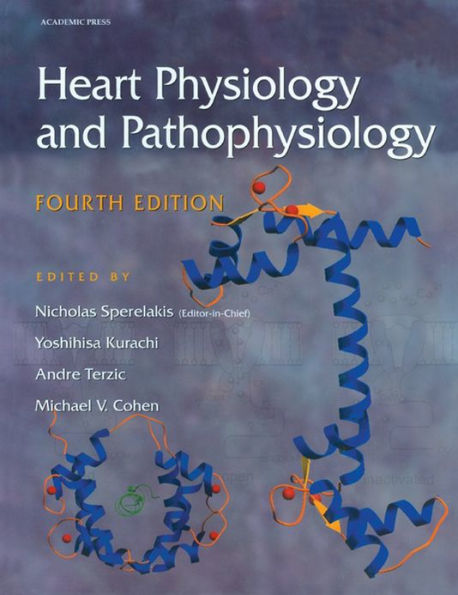Heart Physiology and Pathophysiology
Heart Physiology and Pathophysiology, 4E, provides the foundation for the scientific understanding of heart function and dysfunction, and bridges the gap between basic cardiovascular science and clinical cardiology. This comprehensive text covers all the important aspects of the heart and vascular system. The most important and relevant disorders are presented, with emphasis on the mechanisms involved. The first three editions of this book developed a reputation as the leading reference in cardiovascular science for researchers and academic cardiologists. This recent edition has been updated, expanded, and includes a number of new contributors. It has also been remodeled to expand its usage as a text reference for cardiology residents, practicing cardiologists, and graduate students.Key Features* The most comprehensive book available on this topic* Clear, concise, and complete coverage of all important aspects of cardiovascular physiology/pathophysiology* Completely updated version of the foremost reference on cardiovascular science, including new information on pathophysiology and electrophysiology* Useful tool in bridging the gap between basic science, pathophysiology, and clinical cardiology
1141904096
Heart Physiology and Pathophysiology
Heart Physiology and Pathophysiology, 4E, provides the foundation for the scientific understanding of heart function and dysfunction, and bridges the gap between basic cardiovascular science and clinical cardiology. This comprehensive text covers all the important aspects of the heart and vascular system. The most important and relevant disorders are presented, with emphasis on the mechanisms involved. The first three editions of this book developed a reputation as the leading reference in cardiovascular science for researchers and academic cardiologists. This recent edition has been updated, expanded, and includes a number of new contributors. It has also been remodeled to expand its usage as a text reference for cardiology residents, practicing cardiologists, and graduate students.Key Features* The most comprehensive book available on this topic* Clear, concise, and complete coverage of all important aspects of cardiovascular physiology/pathophysiology* Completely updated version of the foremost reference on cardiovascular science, including new information on pathophysiology and electrophysiology* Useful tool in bridging the gap between basic science, pathophysiology, and clinical cardiology
385.0
In Stock
5
1

Heart Physiology and Pathophysiology
1261
Heart Physiology and Pathophysiology
1261
385.0
In Stock

Product Details
| ISBN-13: | 9780080533889 |
|---|---|
| Publisher: | Elsevier Science & Technology Books |
| Publication date: | 10/09/2000 |
| Sold by: | Barnes & Noble |
| Format: | eBook |
| Pages: | 1261 |
| File size: | 39 MB |
| Note: | This product may take a few minutes to download. |
About the Author
From the B&N Reads Blog
